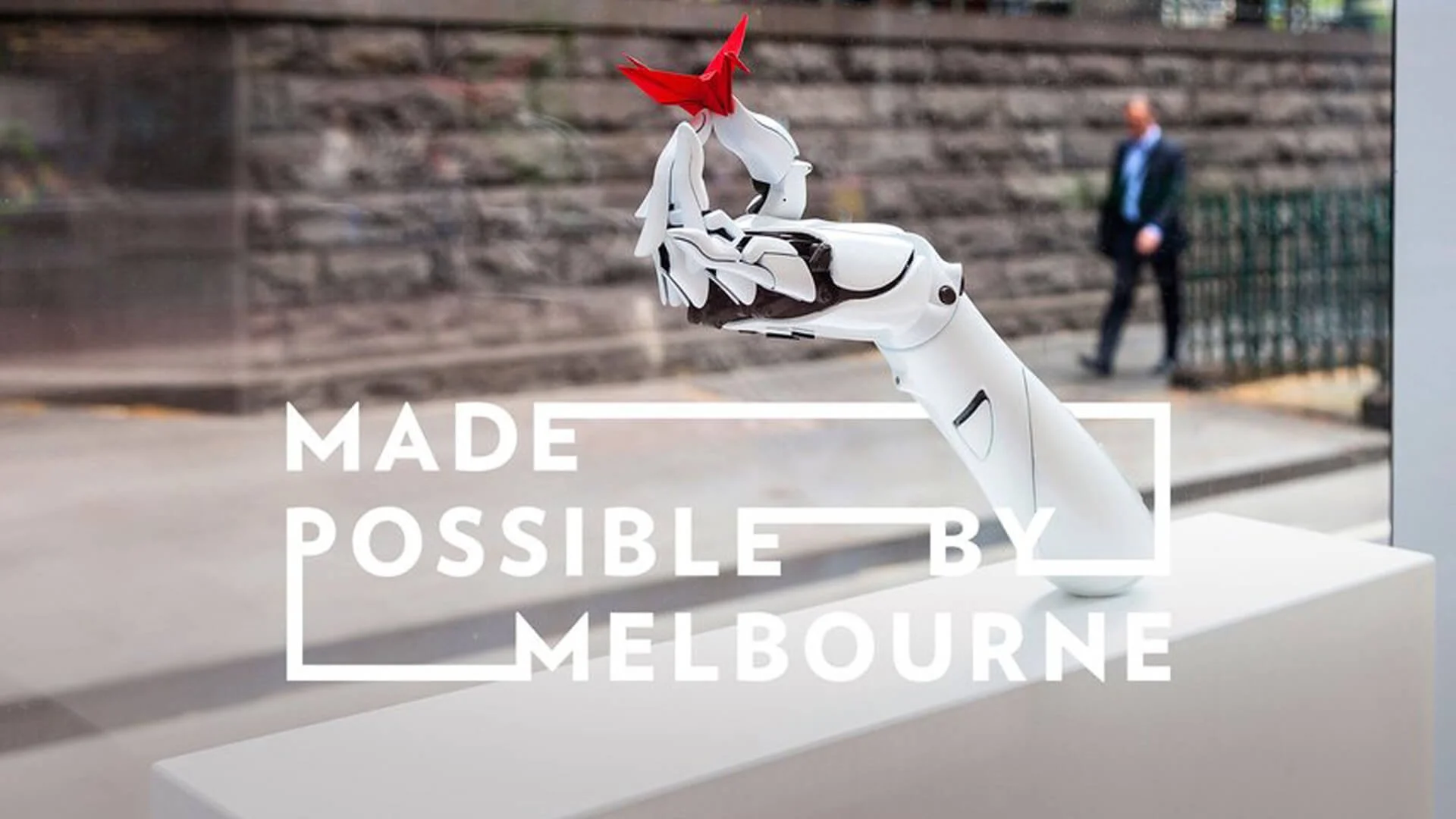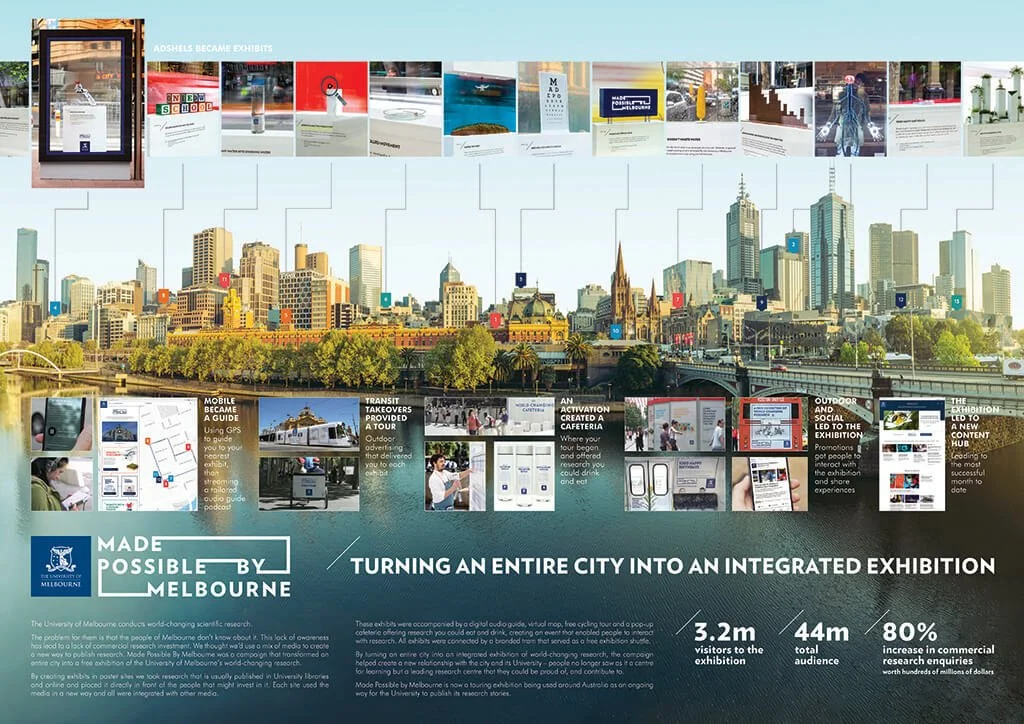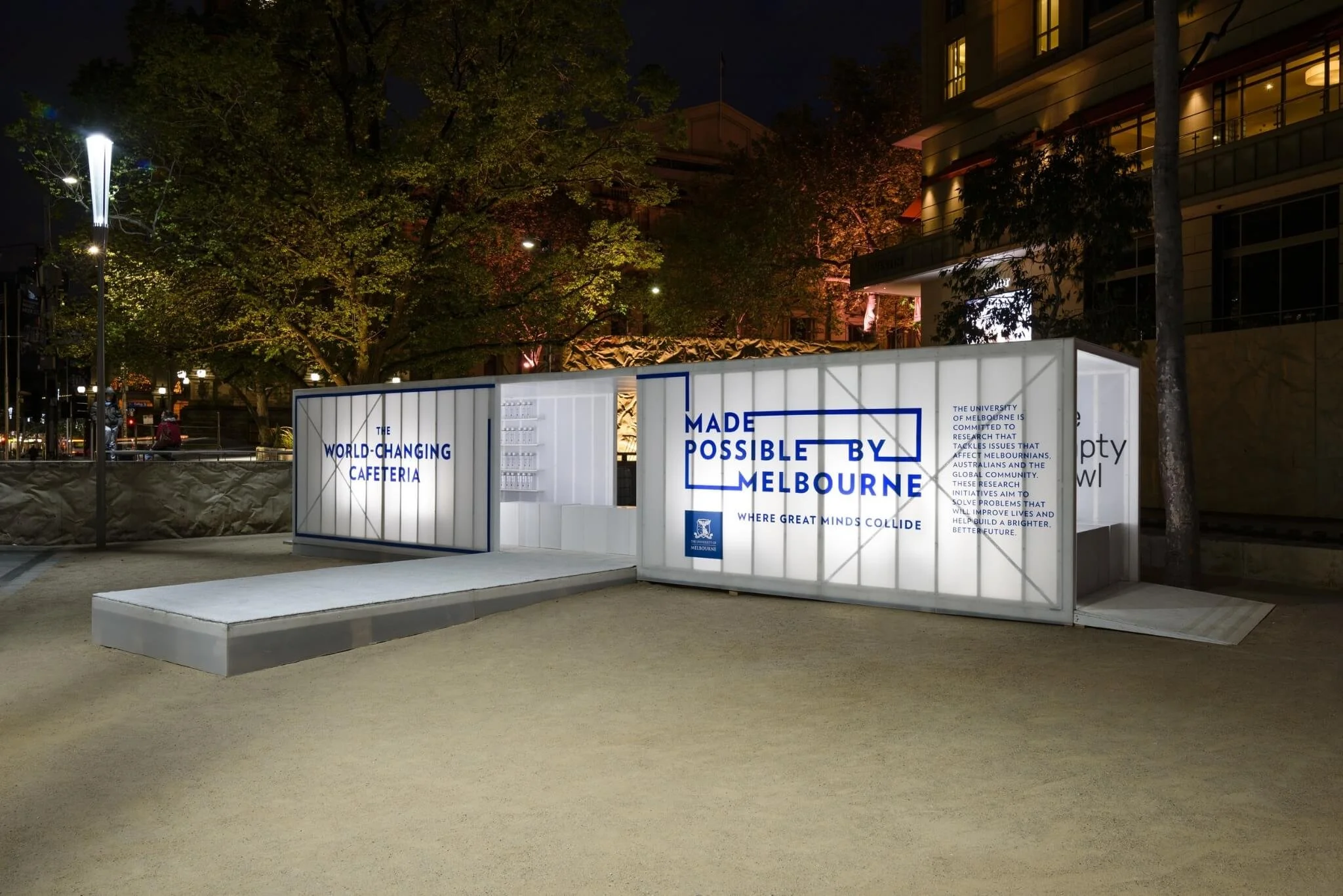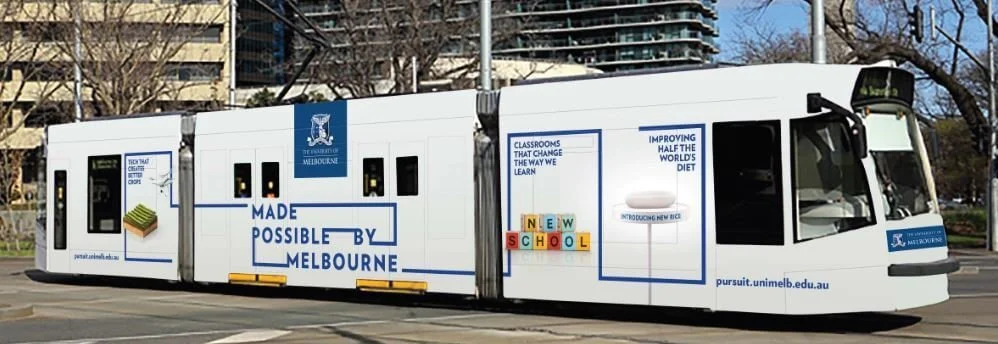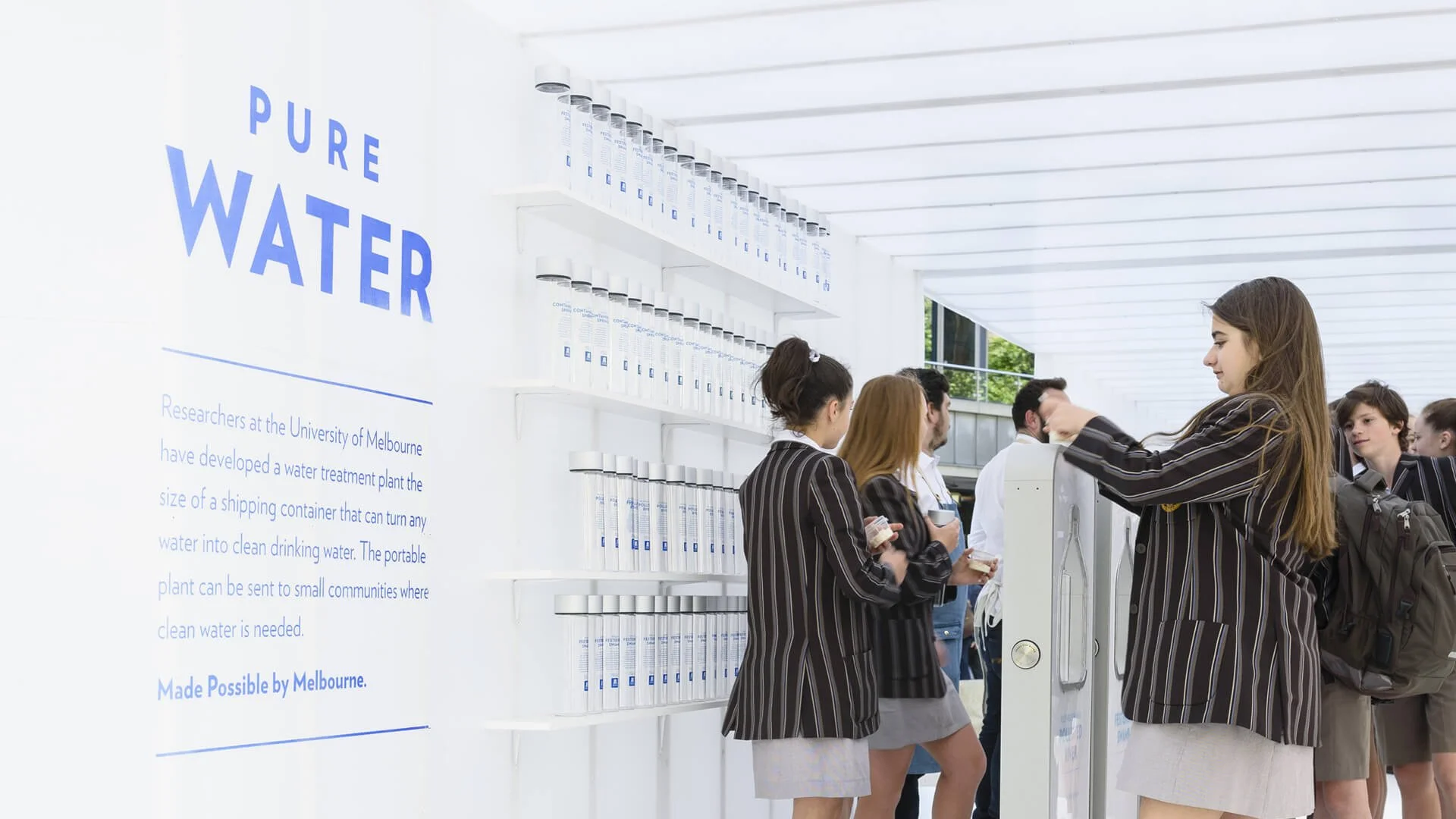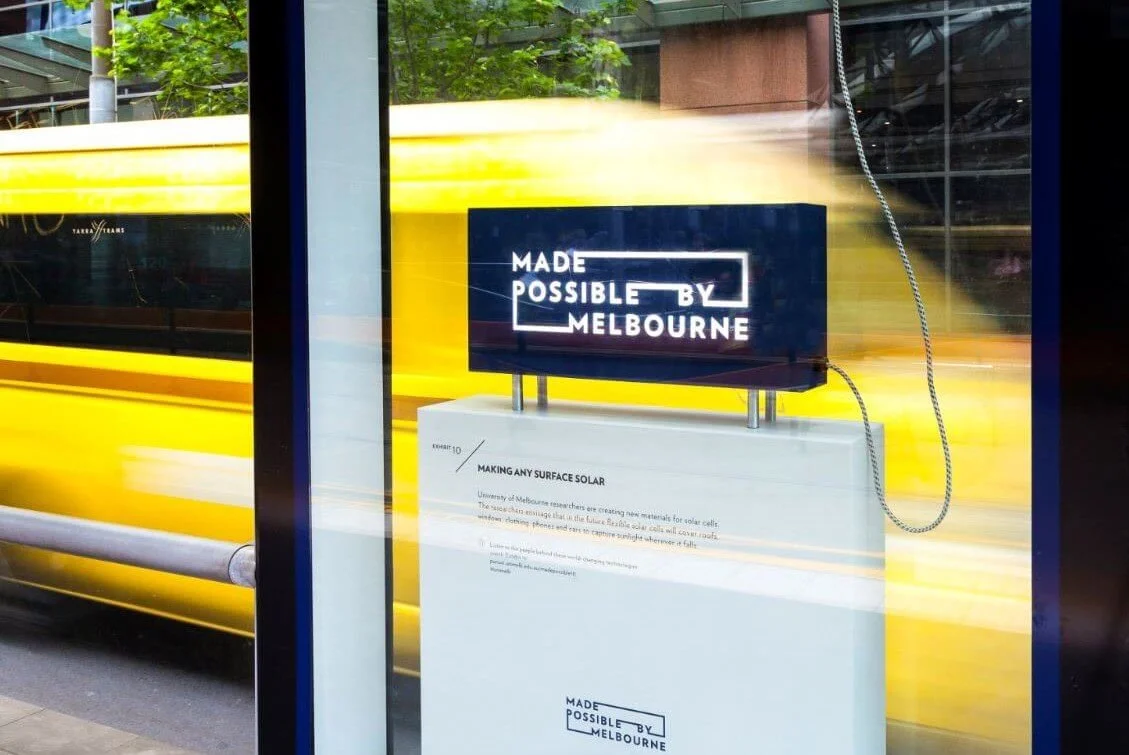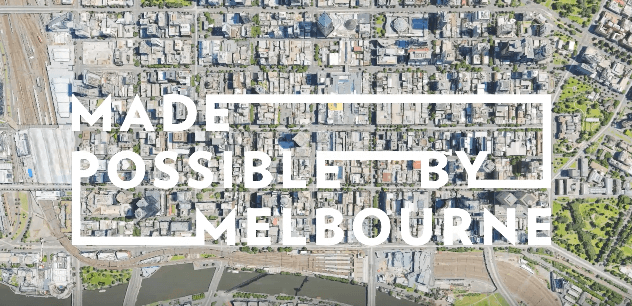Made Possible by Melbourne by University of Melbourne
SYNOPSIS
This beauty was launched back in 2016. I saw it then at D&AD and it’s stuck in my mind ever since. That’s why it’s here.
By way of introduction, the University of Melbourne Newsroom says …
The (Made Possible) campaign aims to provide Melburnians with a tangible display of the world-changing research conducted at the University and the impact it can have on them.
Vice-Chancellor Glyn Davis said the campaign would provide a unique opportunity for people to get up close and personal with the University’s research activities. “As a comprehensive, research-intensive and globally engaged university, the University is committed to sharing advances that shape the world with the wider community. However, like many universities, the challenge remains in how we ensure the widest possible audience connects with and understands our research impact.”
“Melbourne is widely regarded as Australia’s cultural capital, so in offering up a public exhibition of the artefacts that tell the story of the University’s research outcomes, we believe that Melburnians and visitors from around the world will be truly moved by the scale of what we continue to achieve.”
The original campaign was co-created with McCann Melbourne. It won 3 Silver and 2 Bronze Lions at Cannes and a prestigious Wood Pencil at D&AD in 2017.
The platform is ongoing.
CRHEATE REVIEW
This is creative by curation. An exhibition of research artefacts and stories shared across a city. The ‘creative’ wasn’t a film per se … or a press and digital ads. It was exhibits in the real world that communicated face-to-face. Any digital activation was subservient to this.
“The exhibition was about reaching out to people in a new and innovative way. We know that many in the wider community do not realize the scale and impact of the research that the University undertakes, however we also understand that [Melburnians] lead busy lives and university research is not on their radar, so we need to be creative in how we attract attention to our research output and how it can benefit them or those they care about.”
Lara McKay, former Executive Director, Marketing and Communications
I love this single-minded approach. With so many media formats at our disposal (even in 2016, honest) the temptation can be to use as many as possible – and certainly the shiny ones. I imagine there’s a slew of AI creativity waiting to be unleashed from universities around the world soon. I hope they consider the objectives before they do.
University of Melbourne focussed.
The campaign either stuck ruthlessly to its primary objective out of choice, or the budget wasn’t going to stretch to a global campaign. Clearly it’s the former. And good on them. I often say that universities are like towns, but they exist in cities. The connection between them is not always obvious, and the disconnection hurts both the institution and civil society.
Note how VC Glynn Davis referred to ‘stories’ in his introduction. Universities are full of them and there’s no problem with quantity or quality from what I see. The issue is digging them out and turning them into stories, because they are seldom written like by researchers. Someone, somewhere has to be the journalist and go and find the truth.
It reminds me of the quote “Research like an academic. Write like a journalist”.
For a campaign that was focussed on engaging the city, stories are the way to do it, giving everyone, from the youngest to the oldest, a thing they can engage with and remember. Like “Rice that can improve half the world’s diet”.
Visual identity
The exhibition took place across the city of Melbourne, so local residents, school-kids and prospective students could travel around to experience all of the artefacts. So the the “idea of a pathway weaving its way through Melbourne was reflected in the visual identity. We also wanted to embed the theme of ‘connections’ into the identity and the weaving blue line provided this as well”. Smart.
Copy is concise and design is ruthlessly simple. The heroes are the exhibits and their stories which are strategically placed for impact. A real-world experience of the largely unseen.
In general, the films aren’t spectacular productions, but the narratives have clearly been worked on. There’s an elegant clarity that has come either from having brilliantly talented participants who didn’t need a script, or someone in the background sharpening and shortening the story with the contributors.
They launched big
From a brand building perspective it has created an enduring platform (or umbrella, to mix metaphors) for ongoing content about research from different Schools in the university. This increases the power of each as they feed into a consistent theme that builds an audience, and reinforces the reasons to believe Made Possible is a thing. For instance, Saving lives when the power goes out; How music could revolutionise dementia care; and Working hard to make work fairer. One story thematically leading to the next, building the overall brand.
Other universities may do a similar thing, but UoM started strong with their creative idea and execution. By launching with a statement city-wide public exhibition, they echoed what Adam Morgan so memorably referred to as the moon rocket and acceleration story in Eating the Big Fish (a must-read for creatives as well as marketing heads). His analogy being that half the fuel in a space rocket is used in the first mile to get it out of earth’s gravitational pull. For us gravitational pull is audience indifference.
Launch big in other words, not necessarily with money alone, but with effort and energy.
C’mon, whatcha got?
There was been a well-aligned partnership with TEDx which led to 97% of the attendees agreeing it had changed their perception of the University’s research impact and contribution. Reeeesult.
This campaign is a monster among campaigns. A huge idea. Massive undertaking. Lot’s of brave decisions. Lot’s of stakeholder buy-in. And an ongoing presence.
It lays down a metaphorical gauntlet to other cites and says “C’mon, whatcha got?”
Love it.
Three take-outs
-
Local residents may not make up the bulk of your student and research population but it doesn’t stop them from being a valuable part of your story – even advocates. How can you bring the community in – or you out?
-
This is a call to arms. As brilliant as your research and innovation may be, until it’s communicated to a wider audience its impact will remain largely unheralded.
-
When compromise was tempting at many points I’m sure, Melbourne didn’t. They did a ‘thing’. It was big and bold and it made them famous, on their own doorstep and around the world.

